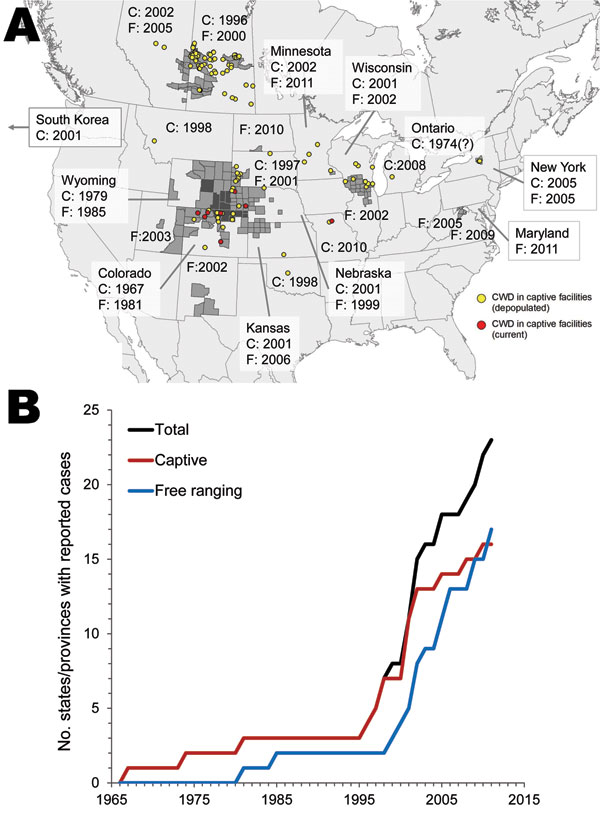Volume 18, Number 3—March 2012
Synopsis
Occurrence, Transmission, and Zoonotic Potential of Chronic Wasting Disease
Figure 1

Figure 1. US states and Canadian provinces reporting chronic wasting disease (CWD) cases. A) Year or season CWD was first identified/confirmed in captive (C) or free-ranging (F) cervids. Underlying map shows geographic distribution of CWD (from the US Geological Survey National Wildlife Health Center, updated October 2011, www.nwhc.usgs.gov/disease_information/chronic_wasting_disease/). Light gray shading, current CWD in free-ranging populations; dark gray shading, known distribution of CWD in free-ranging populations before 2000. All locations are approximations based on best available information. B) Cumulative totals of states and provinces that have reported CWD cases in captive or free-ranging cervids. Totals also include South Korea (2001, captive). Many states have reported captive cases for only 1 or 2 years.
1Current affiliation: Stanford Law School, Stanford, California, USA.